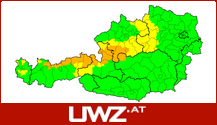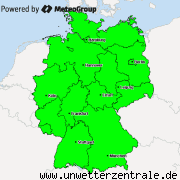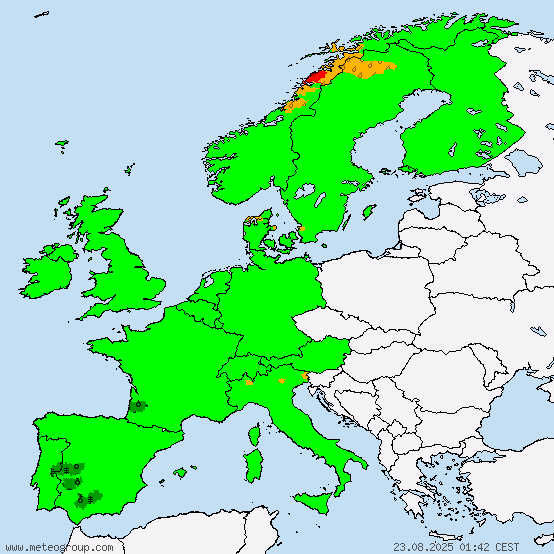heat thunderstorms / air mass thunderstorms
These thunderstorms are local events and occur during periods of nice weather in the summer months.
Their formation is caused by strong sun radiation for several hours, which can only occur during nice weather. Also necessary are moist air masses in the lower levels of the troposphere, which will begin to rise when they get warmer. This type of thunderstorms is a normal part of the meteorological pattern of the summer in (central) Europe, and usually do not bring a significant change of the weather with them, instead, they usually last only a few hours and after them the sun will shine again.
Because of the precipitation of previous thunderstorms and the evaporation of that water (because of the sun that shines again), several thunderstorms can form after each other. Because of the lacking sunshine after the sunset, heat thunderstorms quickly dissolve, dropping all their water, and only high clouds (the anvil) remain.
Usually heat thunderstorms are "single thunderstorms", meaning that they go through the phases from a cumulus to a cumulonimbus and the death of the thunderstorm without re-generating.
Heat thunderstorms are usually the weakest type of thunderstorms. The effects are usually lightning, strong rain, small hail and gusty wind close to the thunderstorm.
One of the main threats of heat thunderstorms is strong rain, especially in stationary cells, which can flood streets and fields.
But of course, also within these usually weak thunderstorms, there are exceptions. When the air is very labile and there is powerful wind shear, then the thunderstorms have stronger updrafts and therefore the side-effects are more intense. The hail of up to 2cm in diameter can be expected, and the wind can turn to storm force. In that case, it is called a tropical air mass thunderstorm. In English they are more commonly referred to as pulse storms.
If the air is labile, heat thunderstorms can collect to form Multicellular thunderstorms - for that see "Multi-cell complex" 
For printable version, see the attatchment.
© M.I.L.K. 2014
Attachment:
Current warnings




© M.I.L.K. 2017
M.I.L.K. - Meteorology: Information. Learning. Knowledge.


